The year 2021 has witnessed many remarkable cultural and archaeological news and events which have enriched people's knowledge of the world and filled the gap of historical research. China Media Group (CMG) welcomes the New Year with a list of some of the most important and memorable domestic archaeological news stories from 2021.
1. China celebrates 100th anniversary of modern archaeology
An event marking the 100th anniversary of the birth of modern Chinese archaeology was held in the city of Sanmenxia, central China's Henan Province on October 17, 2021.
The discovery of the Yangshao Culture (5000-3000 BC), a Neolithic culture derived from the middle reaches of the Yellow River and mainly found in today's Henan and Gansu provinces, is seen as the beginning of the country's modern archaeology.
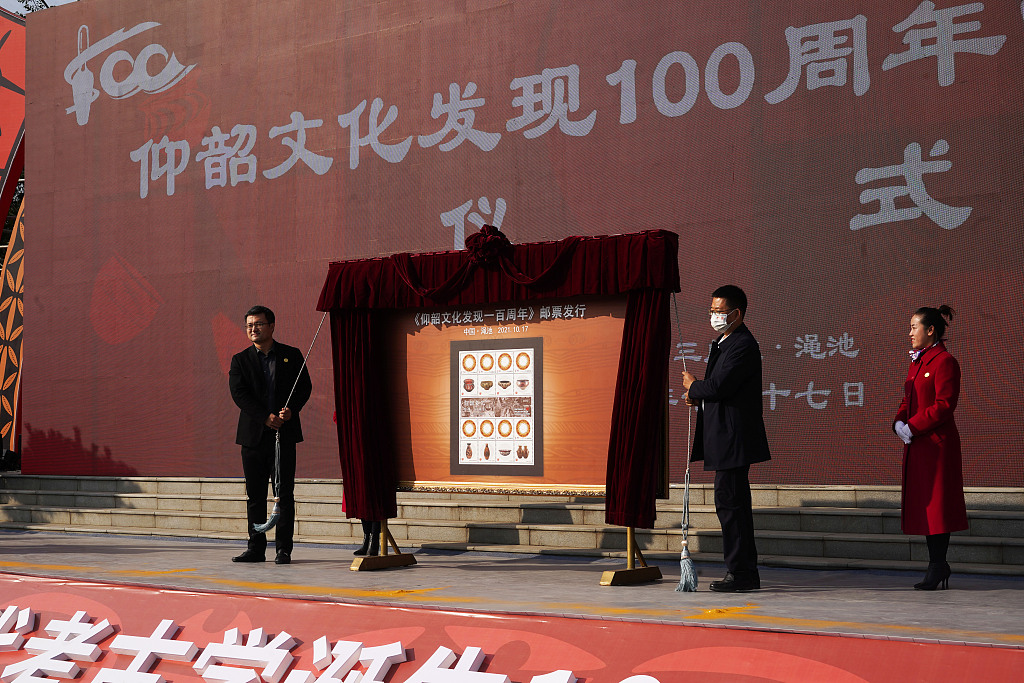
An event marking the 100th anniversary of the birth of modern Chinese archaeology was held in the city of Sanmenxia, central China's Henan Province on October 17, 2021. /CFP
An event marking the 100th anniversary of the birth of modern Chinese archaeology was held in the city of Sanmenxia, central China's Henan Province on October 17, 2021. /CFP
2. Sanxingdui site in Guanghan, Sichuan Province
Some 40 kilometers from Sichuan's provincial capital Chengdu, the Sanxingdui Ruins site is regarded as one of the most important archaeological discoveries in the 20th century. The excavation has lasted for nearly 100 years since the first discovery in the late 1920s.
In 1986, archaeologists found two large-scale sacrificial pits dating back to the Shang Dynasty (1600-1046 BC). Thousands of rare treasures were discovered from the two pits. Since March 2021, Chinese archaeologists have made major breakthroughs at six newly-found sacrificial pits.
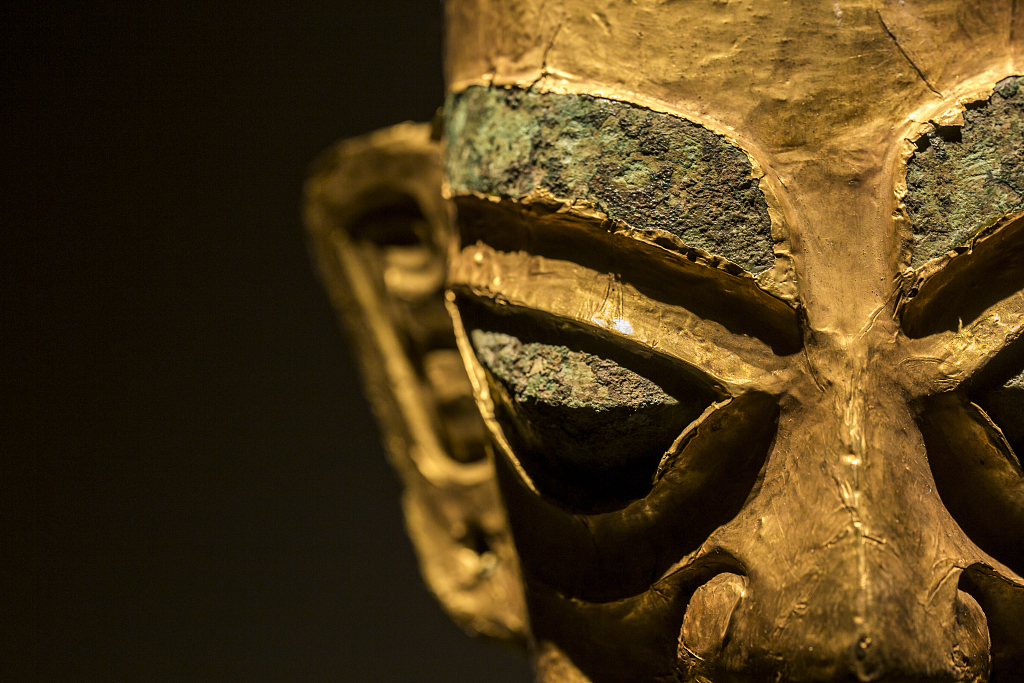
The gold mask with bronze figure unearthed from Sanxingdui Site in Guanghan, Sichuan province. /CFP
The gold mask with bronze figure unearthed from Sanxingdui Site in Guanghan, Sichuan province. /CFP
3. Important findings at the Taiping site in Shaanxi
The Institute of Archaeology of the Chinese Academy of Social Sciences and the Archaeological Research Center of the State Administration of Cultural Heritage co-released a special report about building archaeology with Chinese characteristics and style on September 28, 2021, at which the latest archaeological results of the Taiping Site in Shaanxi were released on the same day.
The excavation area of the Taiping site is 2,600 square meters, and archaeologists have unearthed a large number of pottery, stone tools, animal bones, jade, and more.
Through archaeological excavations in the past six months, it can be confirmed that the Taiping site is a large-scale Haexingzhuang second-phase cultural settlement site, dating from about 4150 to 3700 years ago. The cultural connotation of the Taiping site has already appeared. The characteristics of early civilization with the system as the core laid the prehistoric foundation of the capitalist civilization represented by Zhou, Qin, Han, and Tang in the central part of the Guanzhong Basin.
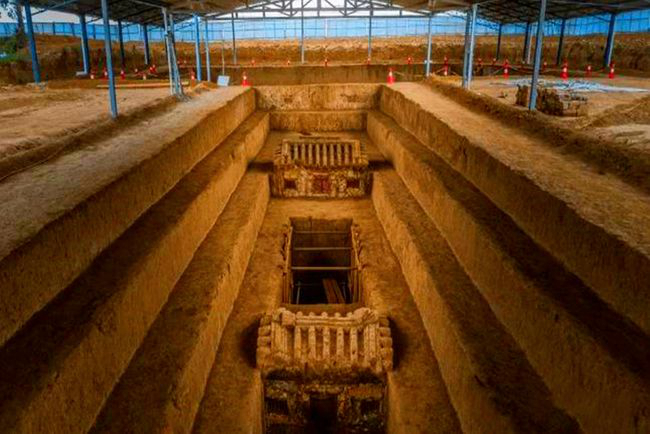
The latest archaeological results of the Taiping Site in Shaanxi were released on September, 2021. /CFP
The latest archaeological results of the Taiping Site in Shaanxi were released on September, 2021. /CFP
4. New underwater archaeological achievements in Xisha Islands
Xisha Islands, one of the four major islands in the South China Sea, are located in the central and western part of the South China Sea and southeast of Hainan Island. Xisha islands for offshore oceangoing vessels in the South China Sea a long voyage provides an important reference to geographical location, and ocean-going ships, to recover the temporary habitat.
In order to effectively protect the Xisha Islands underwater cultural relics and precious resources, the State Administration of Cultural Heritage, the State Administration of Cultural Heritage Center for Underwater Cultural Heritage and the Hainan Museum in 2018 jointly carried out and implemented the Xisha Islands underwater archaeological investigation project. Many important archaeological discoveries have been made so far.

Huaguangjiao No.1 Shipwreck archaeological excavation in Hainan, May 9, 2007. /CFP
Huaguangjiao No.1 Shipwreck archaeological excavation in Hainan, May 9, 2007. /CFP
5. China's longest wooden script excavated from the Warring States Tomb in Hubei
A wooden script with 700 characters written on it in an official script of the Qin dynasty (221–206 BC) was unearthed from Zhengjiahu Cemetery in Yunmeng, Hubei Province on November 16, 2021, according to the joint archaeological team of Zhengjiahu Cemetery. Experts believe that the wooden script is one of early age and long writing tool, which is the first long writing wooden script in China.
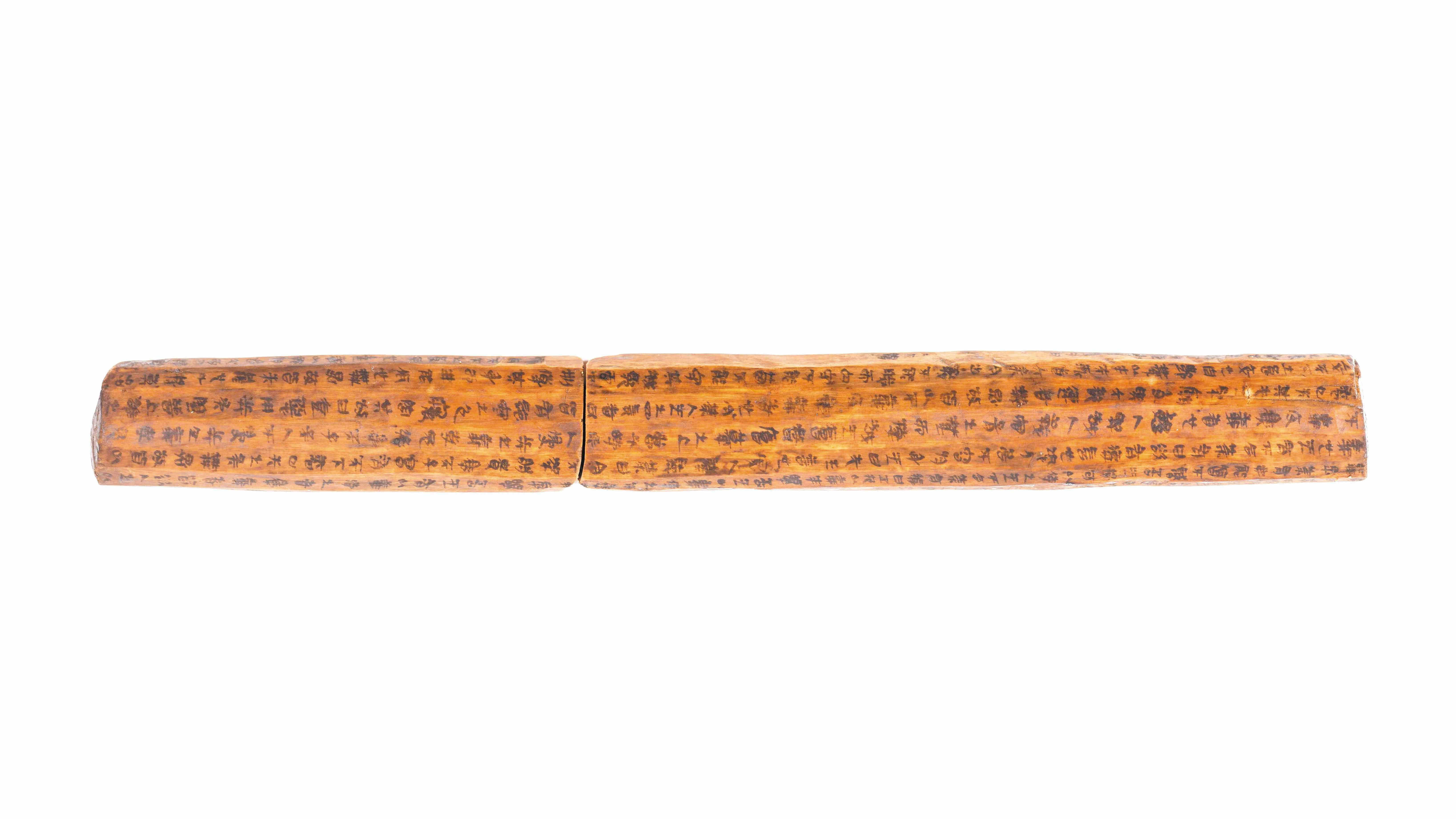
China's longest wooden script excavated from the Warring States Tomb in Hubei, November 16, 2021. /Xinhua News Agency
China's longest wooden script excavated from the Warring States Tomb in Hubei, November 16, 2021. /Xinhua News Agency
6. Major achievements have been made in archaeology in the Tibet Autonomous Region over the past 70 years
2021 marks the 100th anniversary of the birth of modern archaeology in China. In the past century, archaeology in the Tibet Autonomous Region, located in the hinterland of the Qinghai-Tibet Plateau, has gone through from scratch to all-round acceleration.
In particular, the joint archaeological project in Tibet Autonomous Region launched by the State Administration of Cultural Heritage has made remarkable achievements in prehistoric archaeology, Tibetan archaeology, and Buddhist archaeology.
The discovery of a series of prehistoric stone sites, burial sites, rock paintings, grottoes, temples, murals, statues, and other cultural relics has gradually restored the history of civilization in the Tibet Autonomous Region.
7. New archaeological achievements in ancient tombs in southern Shanxi
Ancient tombs discovered in the Beibai'e Cemetery site in Yuanqu county - administered by Yuncheng city in North China's Shanxi province - belonged to senior nobles of the Zhou Dynasty (c.11th century-256 BC).
The excavation area covered 1,200 square meters and nine large and medium-sized tombs from where 17 ash pits were excavated.
There were many types of unearthed artifacts - 500 in total - including those made of copper, jade, stone, lacquer, pottery, bone, lead, and gold. The most important discovery was some 50 sets of bronze ware with inscriptions rich in content and clear in the text.
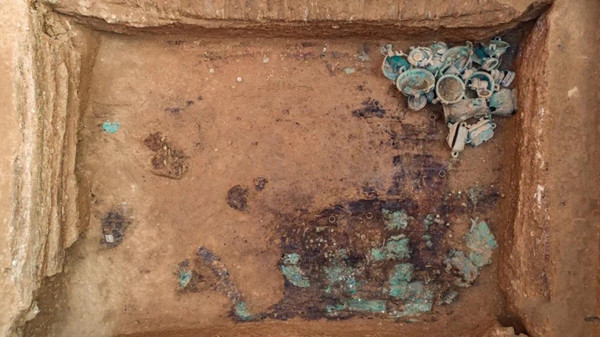
Ancient tombs discovered in the Beibai'e Cemetery site in Yuanqu county. /CFP
Ancient tombs discovered in the Beibai'e Cemetery site in Yuanqu county. /CFP
8. Tomb in NW China confirmed as belonging to Emperor Wen of Han Dynasty
A tomb unearthed in northwest China's Shaanxi Province has been confirmed as that of Emperor Wen of the Han Dynasty (202 BC-220 AD), according to China's National Cultural Heritage Administration (NCHA).
Archaeologists launched systematic excavations and investigations on the mausoleum located at Jiangcun Village in the ancient city of Xi'an in 2016. New research findings traced the tomb to that of Emperor Wen, also known as Liu Heng, who reigned between 180 BC and 157 BC during the Western Han Dynasty.
The tomb stretches as long as 72 meters and goes as deep as 30 meters. Some 110 pits have also been found surrounding the tomb, with over 1,500 cultural artifacts, including pottery items, bronzeware, and ironware, unearthed from eight of the pits.
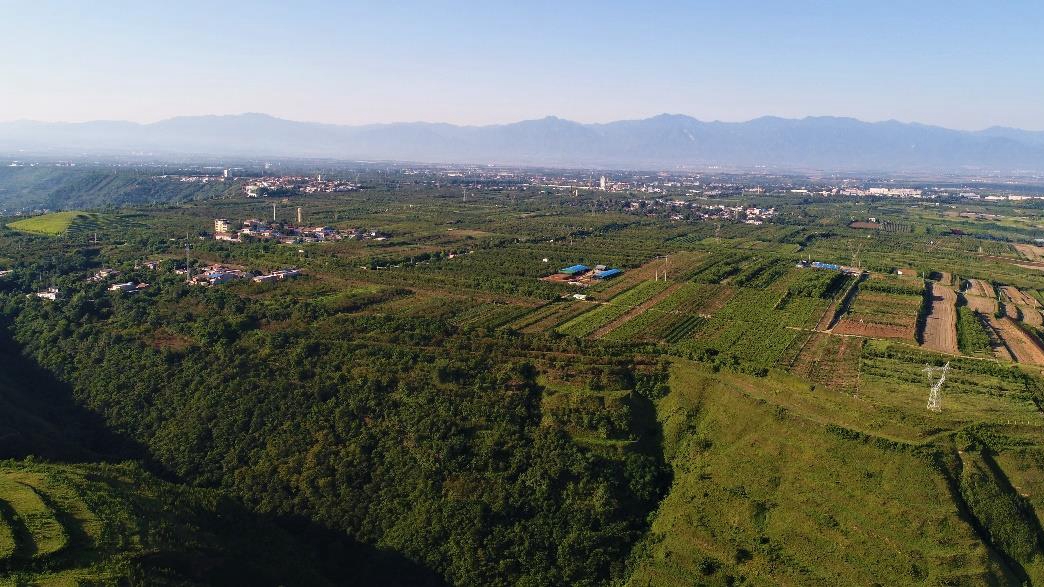
The ancient China tomb is located in an area of Jiangcun Village, Xi'an City, Shaanxi Province, northwest China. /CMG
The ancient China tomb is located in an area of Jiangcun Village, Xi'an City, Shaanxi Province, northwest China. /CMG
9. Tombs discovered in east China possibly royal "Gumie" kingdom
A tomb complex that has been discovered in east China's Zhejiang Province is likely the royal one of an ancient kingdom known as "Gumie," archaeologists have said.
The tomb complex, dating back to the Western Zhou Dynasty (1046-771 B.C.), is located in Qujiang District, Quzhou City. So far, six of the 10 tombs have been excavated, including four between 2018 and 2021.
A large number of relics have been unearthed from the four tombs, including exquisite jade ware, porcelain, bronzeware, and bronze chariots.
Archaeologists said judging from the construction style and scale, the tombs are likely royal ones and might belong to the ruler of an ancient kingdom known as "Gumie," whose territory was mostly in today's Zhejiang.
10. East China's Quanzhou added to UNESCO World Heritage List
Historical sites in east China's port city of Quanzhou won UNESCO World Cultural Heritage status on July 25, 2021, bringing the total number of the country's UNESCO World Heritage sites to 56.
UNESCO accepted "Quanzhou: Emporium of the World in Song-Yuan China" as a cultural property on its World Heritage List at the 44th session of the World Heritage Committee held in Fuzhou, capital of east China's Fujian Province.
Located on narrow plains along the coastline of Fujian, Quanzhou was one of the world's largest ports along the historic Maritime Silk Road, particularly in ancient China's Song Dynasty (960-1279) and Yuan Dynasty (1271-1368).
The serial property includes 22 sites of administrative buildings and structures, religious buildings, and statues. The property witnessed multi-cultural communities, cultural memorial sites and monuments, the production of ceramics and iron, and a transportation network formed of bridges, docks, and pagodas that guided voyagers.
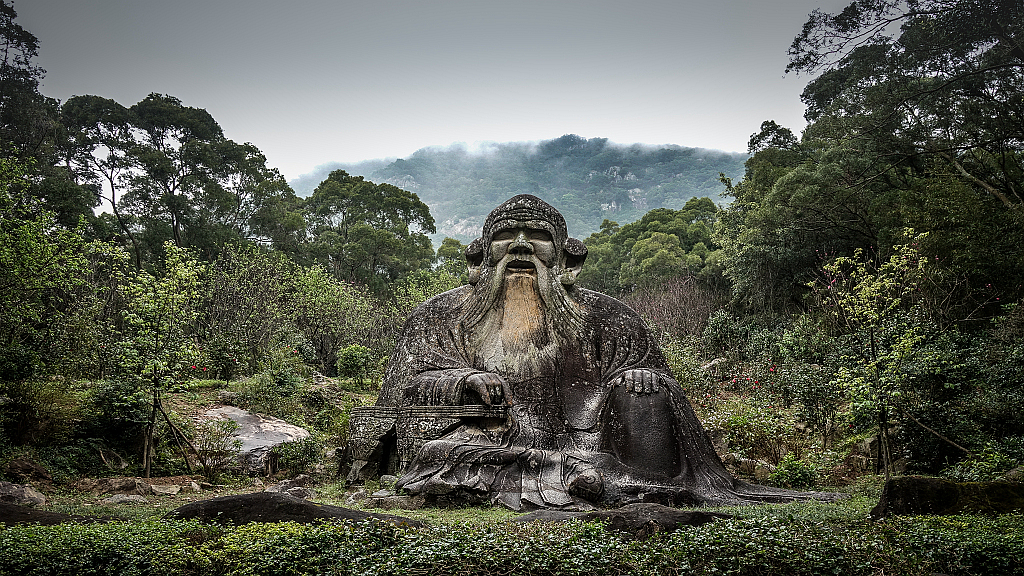
The massive Statue of Lao Tze, the founder of Chinese Taoism, is located in the southern foothills of Mount Qingyuan in Quanzhou, Fujian, China. /CFP
The massive Statue of Lao Tze, the founder of Chinese Taoism, is located in the southern foothills of Mount Qingyuan in Quanzhou, Fujian, China. /CFP
(Cover image made by Xing Cheng)

